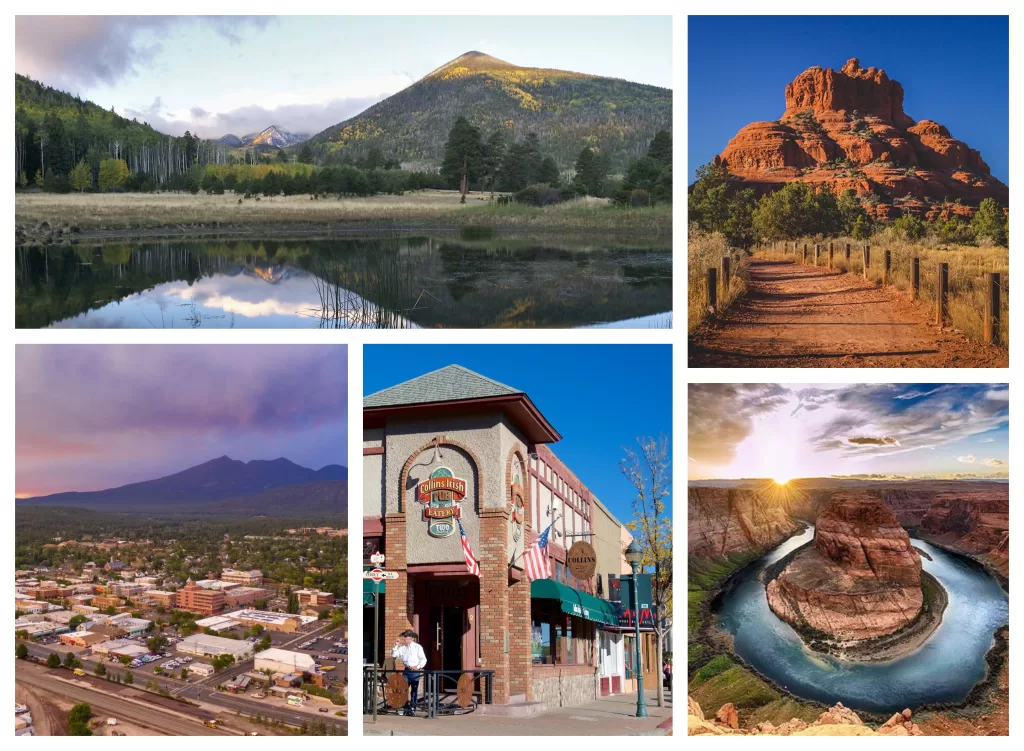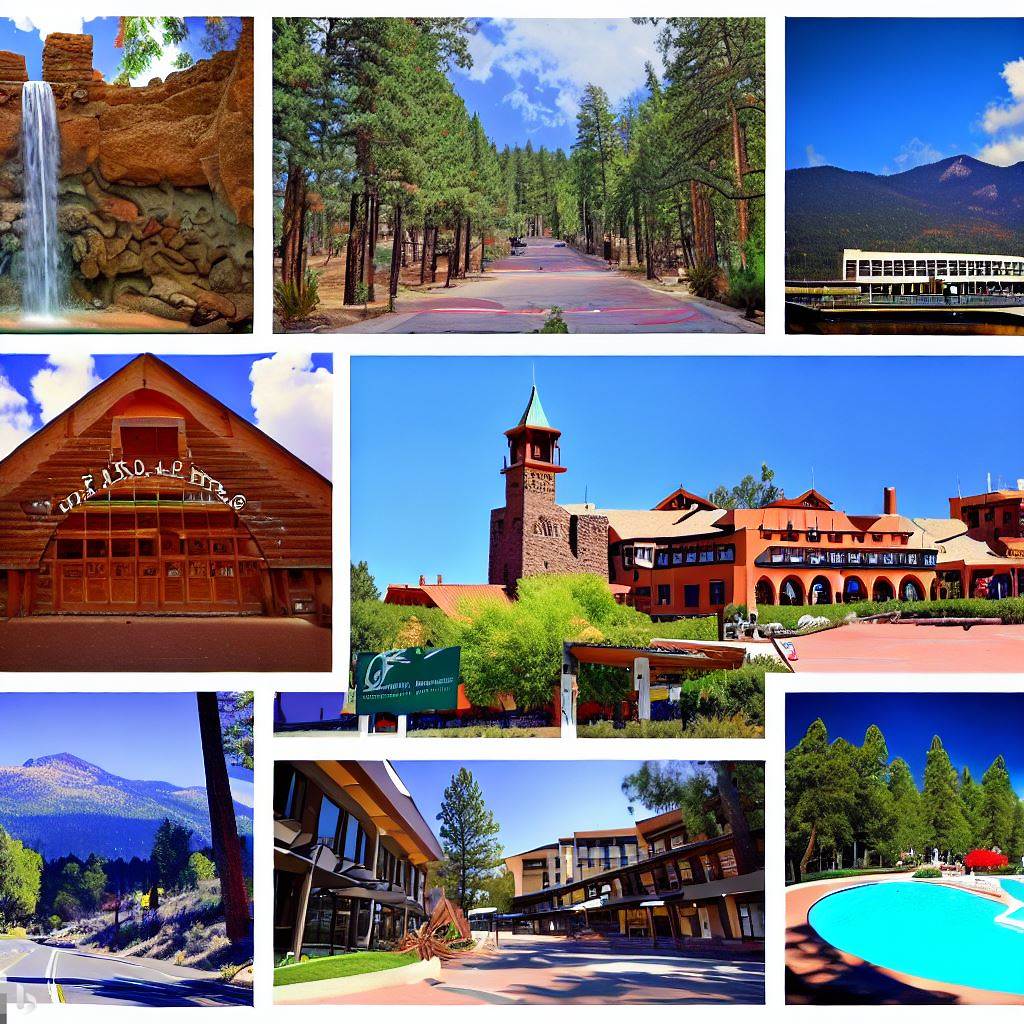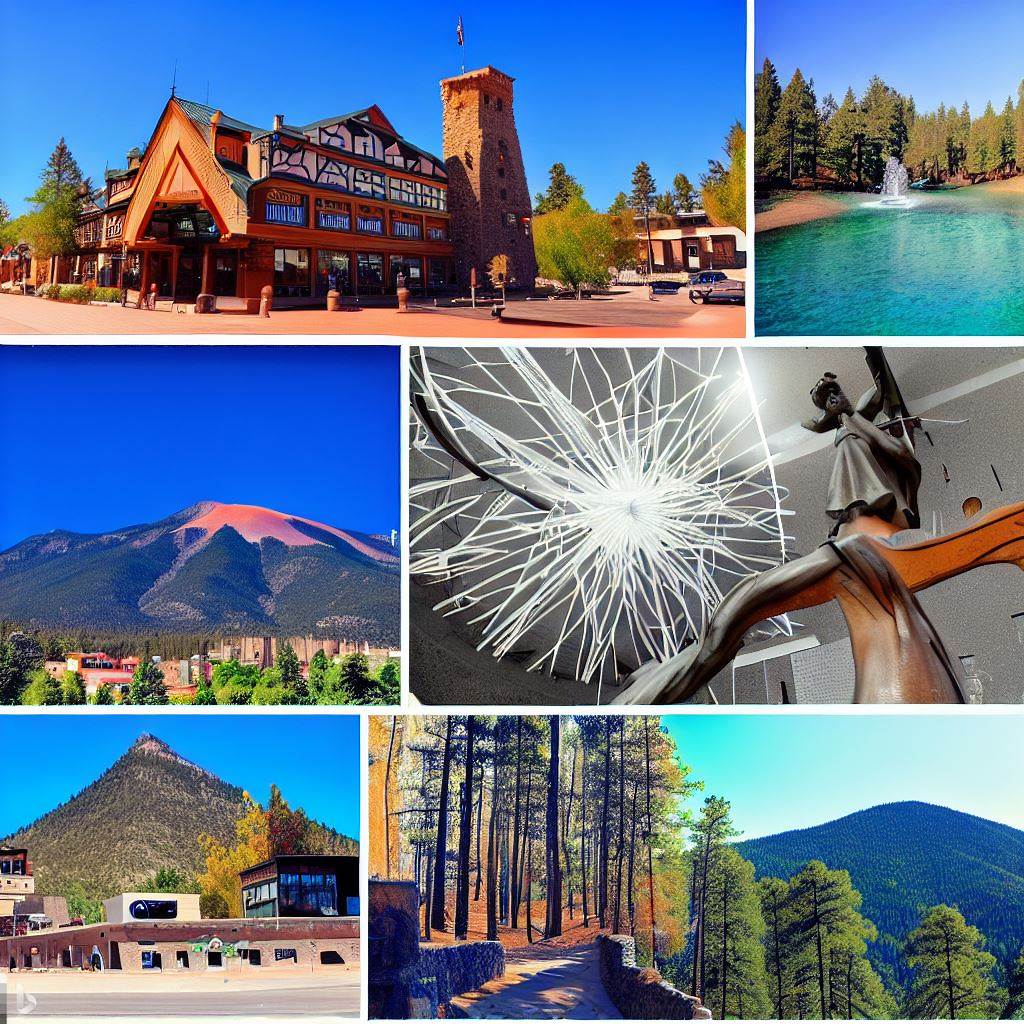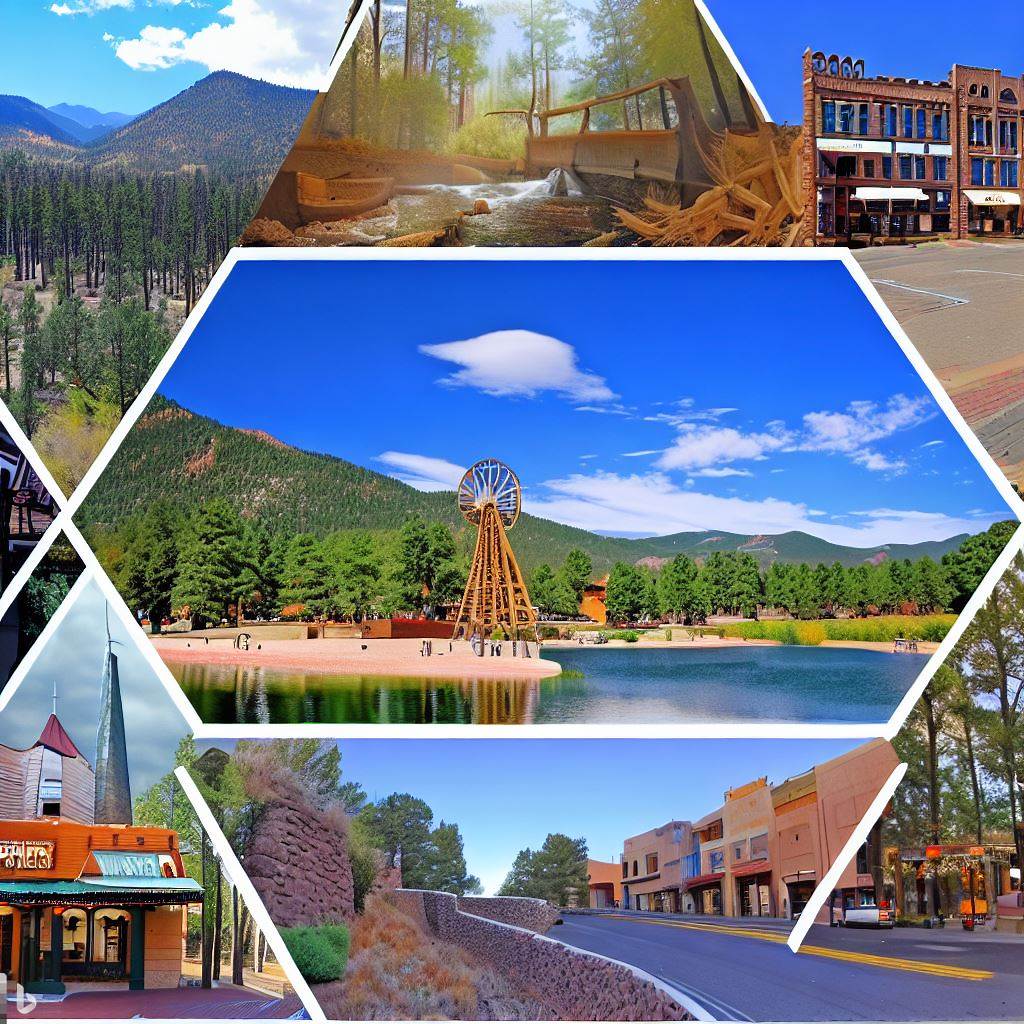The task of defining why Flagstaff, Arizona, is famous may seem simple enough. One might initially think of listing its notable landmarks, like the historic Route 66 that threads its way through the city, or the Lowell Observatory where Pluto was discovered. But, as we’ve come to understand through our efforts to translate thought into words, the task often presents an intricate reality that extends beyond the easily recognizable.
Let’s consider Flagstaff’s status as a gateway to the Grand Canyon, one of the natural wonders of the world. It’s undeniably a major draw, luring countless visitors each year. Yet, does its proximity to Flagstaff make the city famous, or does it simply make it a convenient stopover? For the outdoors enthusiast, the distinction might blur. But for someone with a less adventurous bent, the city’s relationship with the Grand Canyon might not hold the same weight.
Then, there’s the city’s high altitude and associated climate. This ‘City in the Pines’ boasts a surprisingly cool and mild climate for Arizona, with snowy winters that offer a unique contrast to the state’s stereotypical desert image. To the winter sports lover, this might render Flagstaff famous. But, to others, is this a defining feature or just a pleasant anomaly?
A stranger, coming across this page with no previous knowledge of Flagstaff, might wonder: does this multifaceted narrative accurately reflect why the city is famous? Or, does the essence of Flagstaff’s fame lie in the intricate mix of these features, and perhaps others, that aren’t immediately apparent? The fame of a city, much like Flagstaff, is not merely the product of a few notable attributes. Instead, it’s the composite of its diverse experiences, unique offerings, and historical significance. In acknowledging this complexity, we gain a more nuanced understanding of what truly makes a city ‘famous’.

Natural beauty, outdoor activities, and art and culture scene…
Flagstaff, AZ is famous for its natural beauty, outdoor activities, and art and culture scene. It is known for its mountains, forests, and snowboarding at Arizona Snowbowl. Flagstaff is a great place for anyone who loves nature, art, or just a chill mountain town vibe. It is also famous for its meteorite craters and is a great place for stargazing. Flagstaff has a lively historic downtown, year-round entertainment options, top-rated golf courses, and certified dark skies. It is a destination town and attracts many tourists. Flagstaff is also known for its focus on renewable energy, bio-science, and medical devices, and is taking significant steps towards a more sustainable and healthier future.
Flagstaff is famous for many reasons, such as:
- Its location on Route 66: Flagstaff is the largest city in Arizona that was once served by this historic highway, which connected Chicago to Los Angeles and became a symbol of American culture and mobility. Flagstaff has preserved and celebrated its Route 66 heritage with many attractions, such as museums, diners, motels, and festivals.
- Its proximity to the Grand Canyon: Flagstaff is the closest major city to the Grand Canyon National Park, one of the most visited and awe-inspiring natural wonders in the world. Millions of tourists pass through Flagstaff every year to reach the Grand Canyon, and many also enjoy the scenic drives and views along the way.
- Its climate and outdoor recreation: Flagstaff has a mild and pleasant climate that contrasts with the desert heat of other parts of Arizona. It also has a diverse geography that includes mountains, forests, volcanoes, and canyons. Flagstaff offers many opportunities for outdoor adventure, such as hiking, biking, skiing, snowboarding, fishing, rafting, and wildlife watching.
- Its scientific and educational institutions: Flagstaff is home to Northern Arizona University (NAU), a public research university that enrolls over 30,000 students and offers academic programs in various fields. Flagstaff is also a hub for scientific research and discovery, especially in astronomy and geology. The city hosts several observatories and research stations, such as Lowell Observatory (where Pluto was discovered in 1930), U.S. Naval Observatory Flagstaff Station (where lunar maps were made for the Apollo missions), and U.S. Geological Survey Flagstaff Station (where planetary geology studies are conducted).
- Its culture and heritage: Flagstaff has a rich and diverse cultural heritage that reflects its history and location. The city has a strong Native American presence and influence, as it is situated near several tribal lands and reservations. Visitors can learn about the culture and history of the Navajo, Hopi, Havasupai, Hualapai, and other tribes at the Museum of Northern Arizona or at various events and festivals throughout the year. Flagstaff also celebrates its Hispanic and Latino heritage with events such as Cinco de Mayo and Fiesta de Mayo. Additionally, Flagstaff has a thriving arts and music scene, with venues such as the Orpheum Theater, the Coconino Center for the Arts, and the Pepsi Amphitheater.



What is the city of Flagstaff known for?
It is located near the San Francisco Peaks, the highest mountain range in Arizona, and the Colorado Plateau. It is also home to several scientific and educational institutions, such as the U.S. Naval Observatory Flagstaff Station, the U.S. Geological Survey Flagstaff Station, and Northern Arizona University. Flagstaff is known for its natural beauty, cultural diversity, and dark skies. It is a popular destination for outdoor recreation, such as hiking, skiing, and camping. It is also a gateway to several national parks and monuments, such as the Grand Canyon National Park, the Walnut Canyon National Monument, and the Wupatki National Monument. Flagstaff has a rich history and culture, influenced by its Native American, Hispanic, and pioneer heritage. It was founded in 1876 by settlers who raised a flagpole made from a pine tree to celebrate the centennial of the United States. It was also a major stop along Route 66, the historic highway that connected Chicago and Los Angeles. In 1930, astronomer Clyde Tombaugh discovered Pluto from the Lowell Observatory in Flagstaff. Flagstaff was also involved in the space program, as several lunar astronauts trained in the area and some of the Moon landing sites were selected based on observations from Flagstaff observatories.

Why is Flagstaff a tourist attraction?
Flagstaff is a popular tourist attraction for several reasons. It is a stop on historic Route 66, one of the first highways to be built in the United States. Flagstaff is located near the center of Northern Arizona at the juncture of Interstate 17 and Interstate 40, making it easily accessible. The city is also known for its outdoor activities, including skiing at the Arizona Snowbowl ski resort and hiking in the San Francisco Peaks. Additionally, Flagstaff has a rich history and several historic hotspots. There are many things to do in Flagstaff, including visiting the Lowell Observatory, exploring the Museum of Northern Arizona, and hiking in the Coconino National Forest.
What are the best outdoor activities to do in Flagstaff?
There are many outdoor activities to do in Flagstaff. Visitors can hike and sightsee in the San Francisco Peaks, explore Native American archeological sites, and wander through the volcanic landscape. For extreme adventure, visitors can try the unique tree-top obstacle course at Fort Tuthill County Park. Other outdoor activities include skiing at the Arizona Snowbowl ski resort, mountain biking, and rock climbing. Visitors can also explore the Coconino National Forest, which offers many hiking trails and opportunities to see wildflowers.